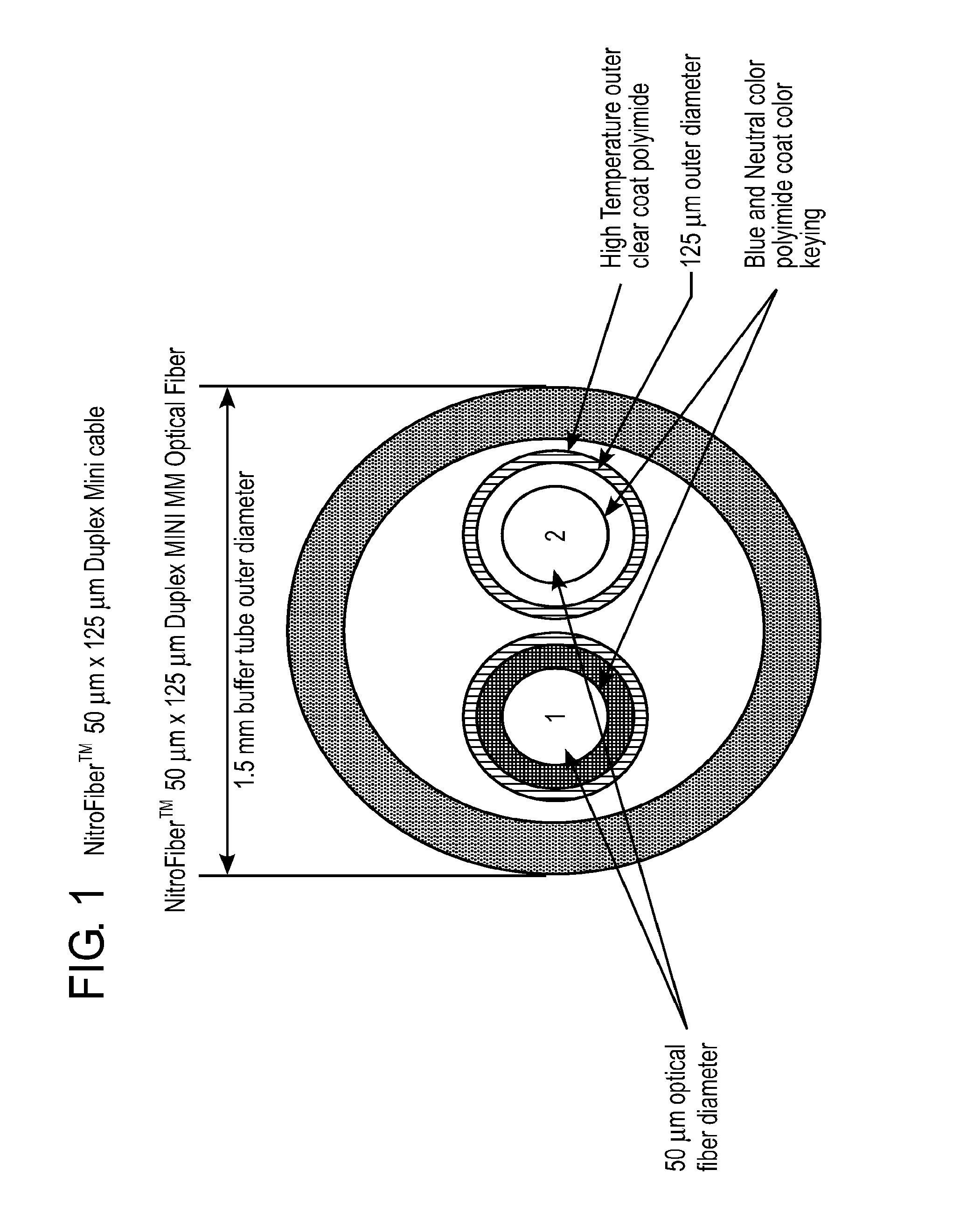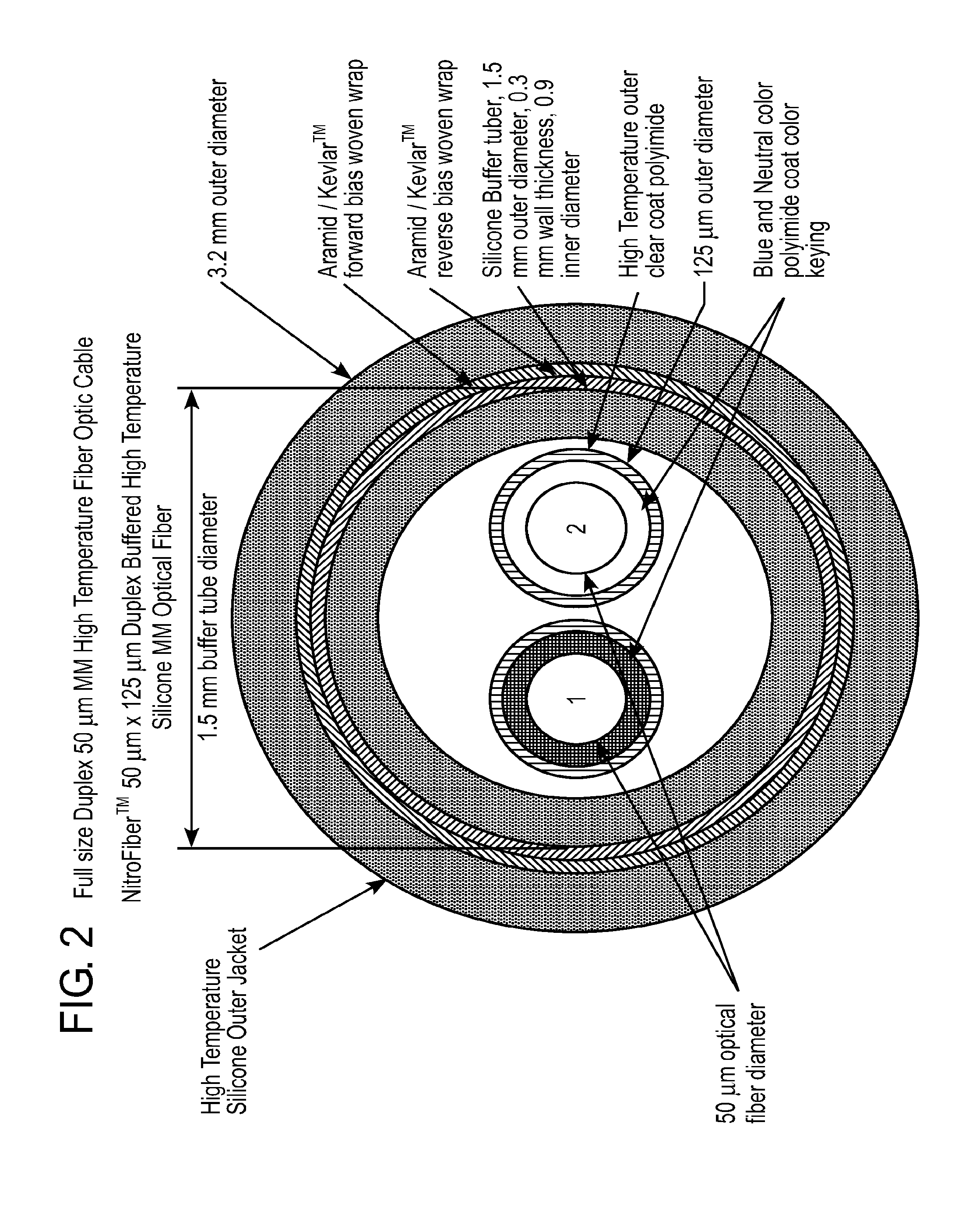Communications cable and method of making same
a technology of communication cable and fiber optic cable, which is applied in the field of communication cable, can solve the problems of unusable signal after 3000 feet, fiber optic cable using multi-mode fiber typically having distance limitations, and creating a much greater threat of damage to multi-mode fiber optic cables, etc., and achieves the effects of enhancing promoting combustibles or air circulation, and promoting longitudinal force or tensile strength
- Summary
- Abstract
- Description
- Claims
- Application Information
AI Technical Summary
Benefits of technology
Problems solved by technology
Method used
Image
Examples
Embodiment Construction
[0024]In the preferred embodiment of the present communications cable and method for making same, a high temperature optical glass is provided that is capable of withstanding temperatures in excess of the 800 degree Fahrenheit range. Preferably, 2-50 μm×125 μm Multi-Mode fibers are both color coated and mechanically protect with a similarly high temperature polyimide plastic bring the overall diameter to 125 μm and leaving Buffer colors of Natural, and Blue for easy polarity identification. In the Quad design grouping additional Yellow and Red colors are used for further easy identification.
[0025]As shown in FIGS. 1-3, in a first step, preferably two and up to four optical fibers are placed within a high temperature protective silicone rubber buffer tube, to enhance their thermal handling properties. As shown in FIG. 1, this silicone rubber buffer tube is preferably approximately 1 millimeter in outside diameter.
[0026]In FIG. 1, the nature of the product at this stage with its therm...
PUM
 Login to View More
Login to View More Abstract
Description
Claims
Application Information
 Login to View More
Login to View More - R&D
- Intellectual Property
- Life Sciences
- Materials
- Tech Scout
- Unparalleled Data Quality
- Higher Quality Content
- 60% Fewer Hallucinations
Browse by: Latest US Patents, China's latest patents, Technical Efficacy Thesaurus, Application Domain, Technology Topic, Popular Technical Reports.
© 2025 PatSnap. All rights reserved.Legal|Privacy policy|Modern Slavery Act Transparency Statement|Sitemap|About US| Contact US: help@patsnap.com



